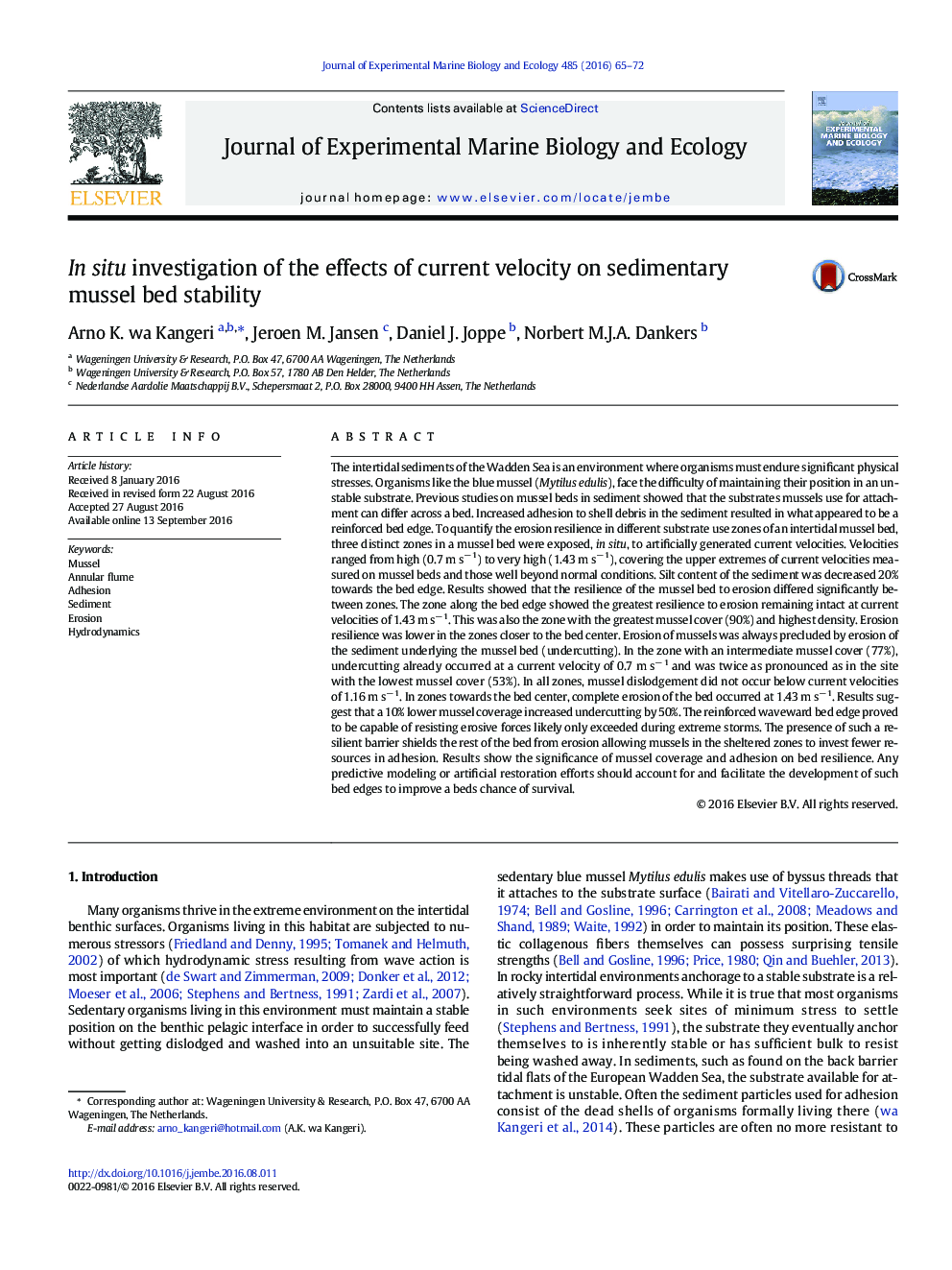| کد مقاله | کد نشریه | سال انتشار | مقاله انگلیسی | نسخه تمام متن |
|---|---|---|---|---|
| 4395192 | 1618390 | 2016 | 8 صفحه PDF | دانلود رایگان |
• Leading edge of a mussel bed successfully resists current velocities of 1.43 m s− 1.
• Undercutting of sediment precludes erosion of mussels from a mussel bed.
• Areas of intermediate mussel cover are more susceptible to undercutting than areas of low cover.
• A 10% decrease in mussel coverage reduces erosion resilience by 50%.
The intertidal sediments of the Wadden Sea is an environment where organisms must endure significant physical stresses. Organisms like the blue mussel (Mytilus edulis), face the difficulty of maintaining their position in an unstable substrate. Previous studies on mussel beds in sediment showed that the substrates mussels use for attachment can differ across a bed. Increased adhesion to shell debris in the sediment resulted in what appeared to be a reinforced bed edge. To quantify the erosion resilience in different substrate use zones of an intertidal mussel bed, three distinct zones in a mussel bed were exposed, in situ, to artificially generated current velocities. Velocities ranged from high (0.7 m s− 1) to very high (1.43 m s− 1), covering the upper extremes of current velocities measured on mussel beds and those well beyond normal conditions. Silt content of the sediment was decreased 20% towards the bed edge. Results showed that the resilience of the mussel bed to erosion differed significantly between zones. The zone along the bed edge showed the greatest resilience to erosion remaining intact at current velocities of 1.43 m s− 1. This was also the zone with the greatest mussel cover (90%) and highest density. Erosion resilience was lower in the zones closer to the bed center. Erosion of mussels was always precluded by erosion of the sediment underlying the mussel bed (undercutting). In the zone with an intermediate mussel cover (77%), undercutting already occurred at a current velocity of 0.7 m s− 1 and was twice as pronounced as in the site with the lowest mussel cover (53%). In all zones, mussel dislodgement did not occur below current velocities of 1.16 m s− 1. In zones towards the bed center, complete erosion of the bed occurred at 1.43 m s− 1. Results suggest that a 10% lower mussel coverage increased undercutting by 50%. The reinforced waveward bed edge proved to be capable of resisting erosive forces likely only exceeded during extreme storms. The presence of such a resilient barrier shields the rest of the bed from erosion allowing mussels in the sheltered zones to invest fewer resources in adhesion. Results show the significance of mussel coverage and adhesion on bed resilience. Any predictive modeling or artificial restoration efforts should account for and facilitate the development of such bed edges to improve a beds chance of survival.
Journal: Journal of Experimental Marine Biology and Ecology - Volume 485, December 2016, Pages 65–72
